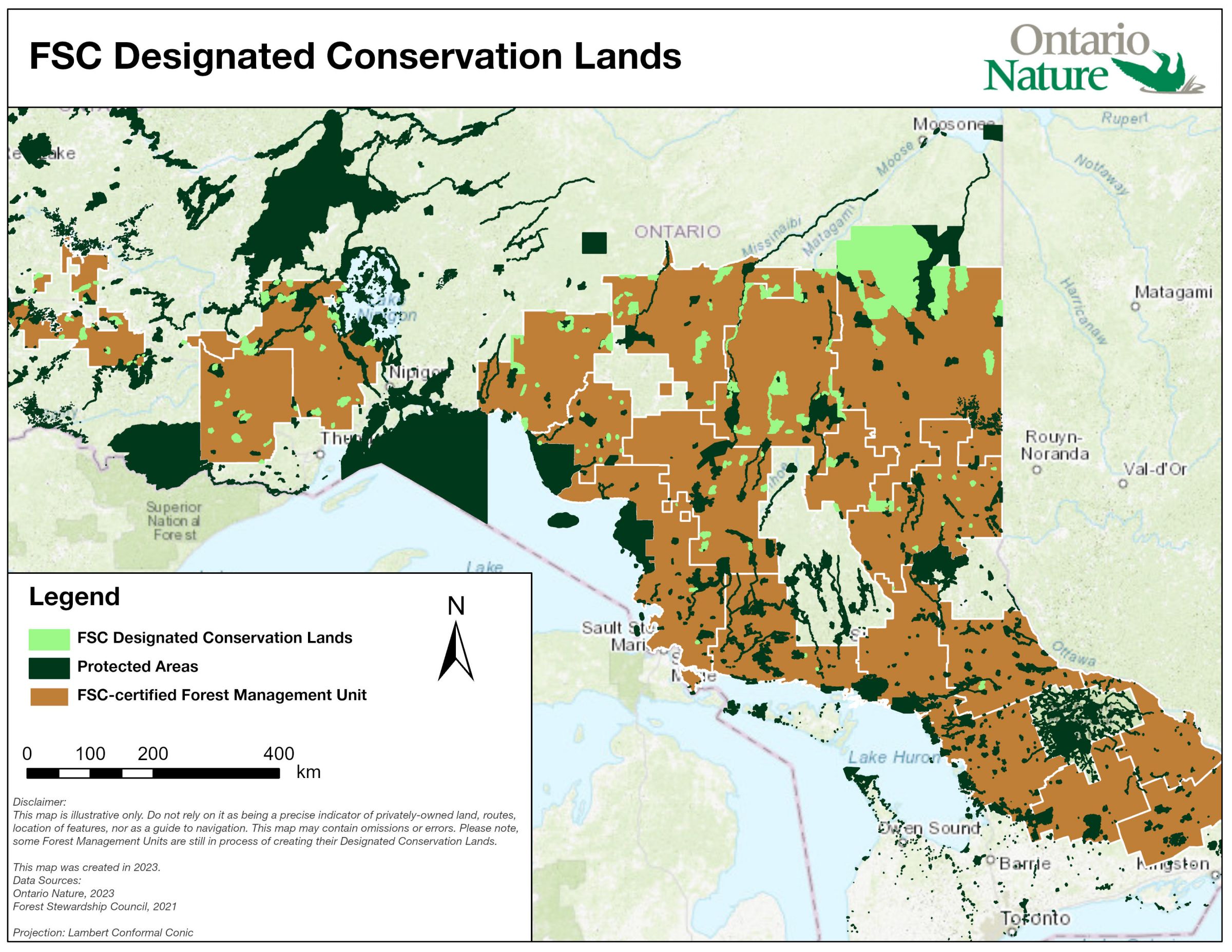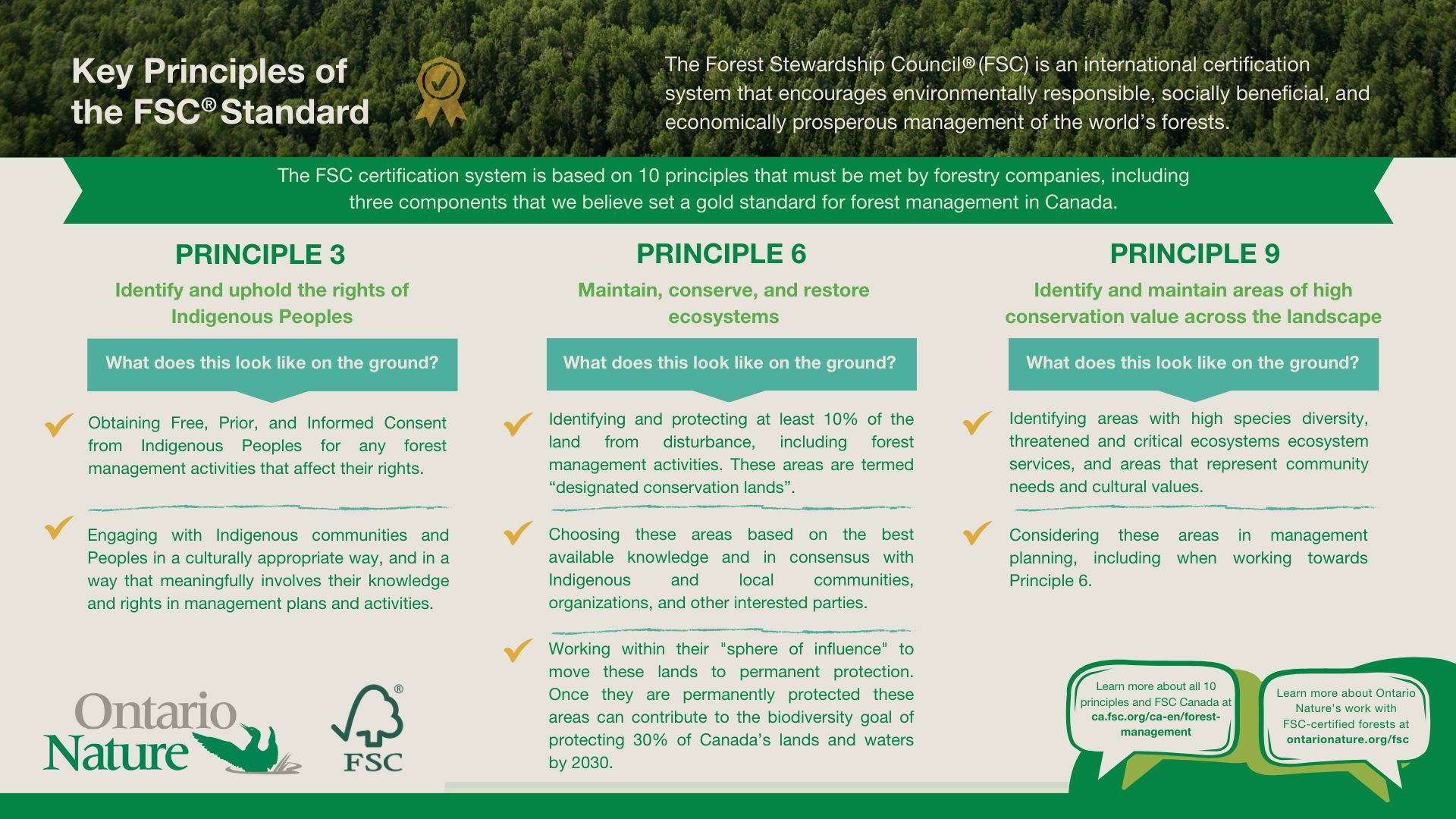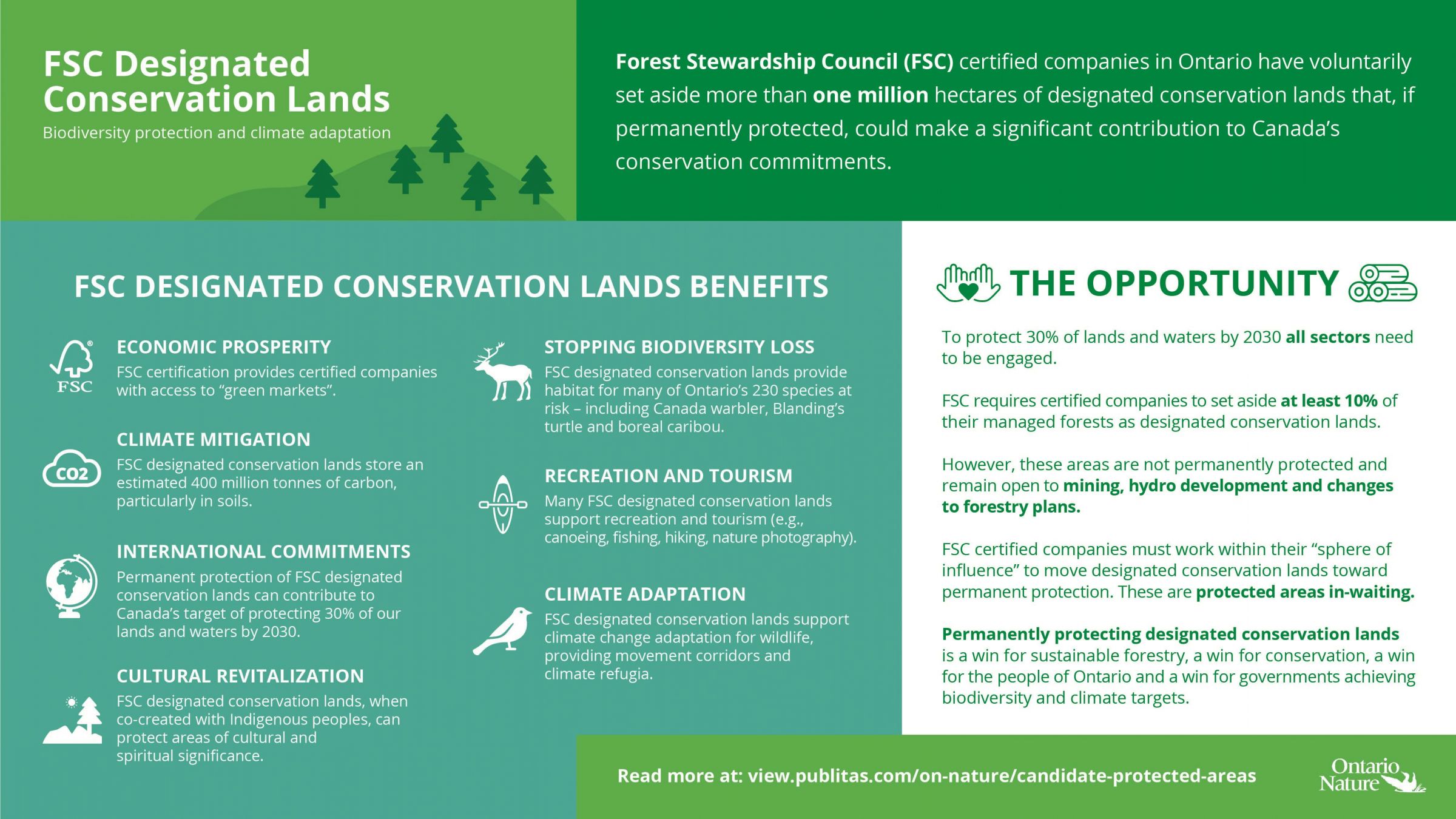Kingfisher Lake, FSC Designated Conservation Land candidate site © Kristen Setala
The Opportunity
Ontario Nature has identified an opportunity to work with the forestry industry, Indigenous communities, local communities, and environmental organizations to permanently protect nearly one million hectares of land in Forest Stewardship Council (FSC) certified forests.
Boreal forest © FSC
FSC Certification
- Sustainably managed forests protect ecosystems, Indigenous peoples’ homelands, and economic prosperity for forestry-dependent communities.
- FSC is an international certification and labeling system that promotes environmentally appropriate, socially beneficial, and economically prosperous management of the world’s forests.
- As part of the FSC National Forest Stewardship Standard of Canada, FSC-certified forestry companies must ensure at least 10 percent of their managed forests are set aside for protection. This can be through provincially or federally protected areas, or as designated conservation lands that the companies identify.
- Once designated conservation lands have been identified, forestry companies must work within their “sphere of influence” (e.g., relationships with Indigenous communities, stakeholders, and governments) to seek the permanent protection of these sites.
Dune forest © Noah Cole
Designated Conservation Lands
- Over 140 designated conservation lands have been identified through FSC certification in Ontario. They encompass nearly 1 million hectares.
- The processes used to identify these lands are scientifically rigorous and require the meaningful engagement of affected Indigenous communities. That makes them easy wins for protection.
- Estimates from our carbon storage assessments of Ontario’s designated conservation lands suggest that collectively these sites store over 400 million tonnes of carbon.
- Designated conservation lands are identified based on conservation values such as connectivity, species at risk habitat, carbon storage and the site’s cultural significance.
Wabakimi Provincial Park, D'Alton Block © Vern Fish

Nature-based Climate Solutions
- Protecting intact ecosystems is a nature-based climate solution. It is one of the ways we can address the dual crises of biodiversity loss and climate change.
- The latest Intergovernmental Panel on Climate Change (IPCC) report warns that immediate action is needed to limit global warming.
- Ontario’s forests and wetlands on the Canadian Shield span 70 million hectares and provide many crucial ecosystem services, such as carbon storage and climate regulation.
Hick Lake © Kristen Setala
What We’re Doing
- We regularly contribute to FSC certification processes to improve outcomes for nature in harvested forests.
- We are exploring the legal and policy tools in Ontario to find a path to permanently protect FSC designated conservation lands.
- We’re working with Indigenous and conservation partners to explore what Free, Prior, and Informed Consent (FPIC) and Land Back mean for our conservation work.
- We have been assessing carbon storage in areas of conservation interest across the province, including FSC designated conservation lands and other candidate areas to understand their value in terms of climate change mitigation.
Nabish Lake wetlands © Kristen Setala
What You Can Do
- Read our report about the potential contribution of Forest Stewardship Council designated conservation lands to Ontario’s protection targets.
- Explore the Your Protected Places Story Map.
- Donate to help us permanently protect designated conservation lands in central and northern Ontario.
- Look for the FSC label.
Red pines © Brett Whaley CC BY-NC 2.0






